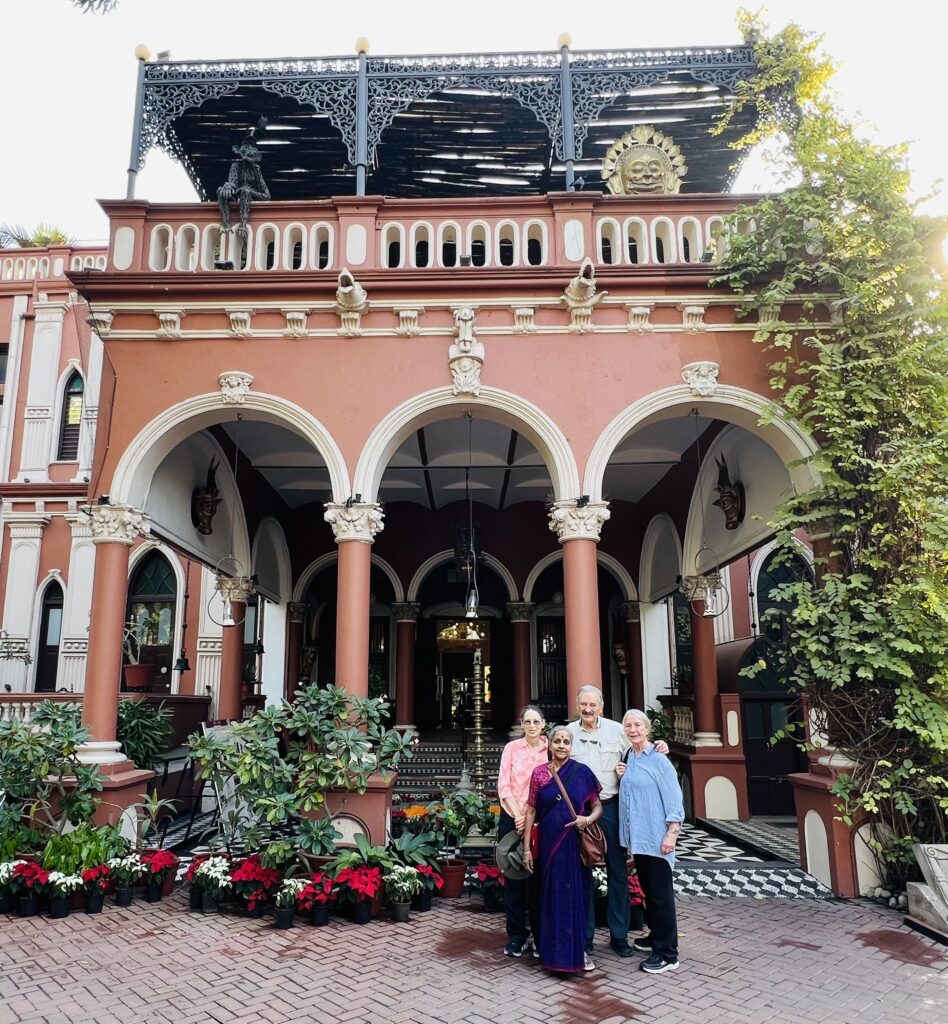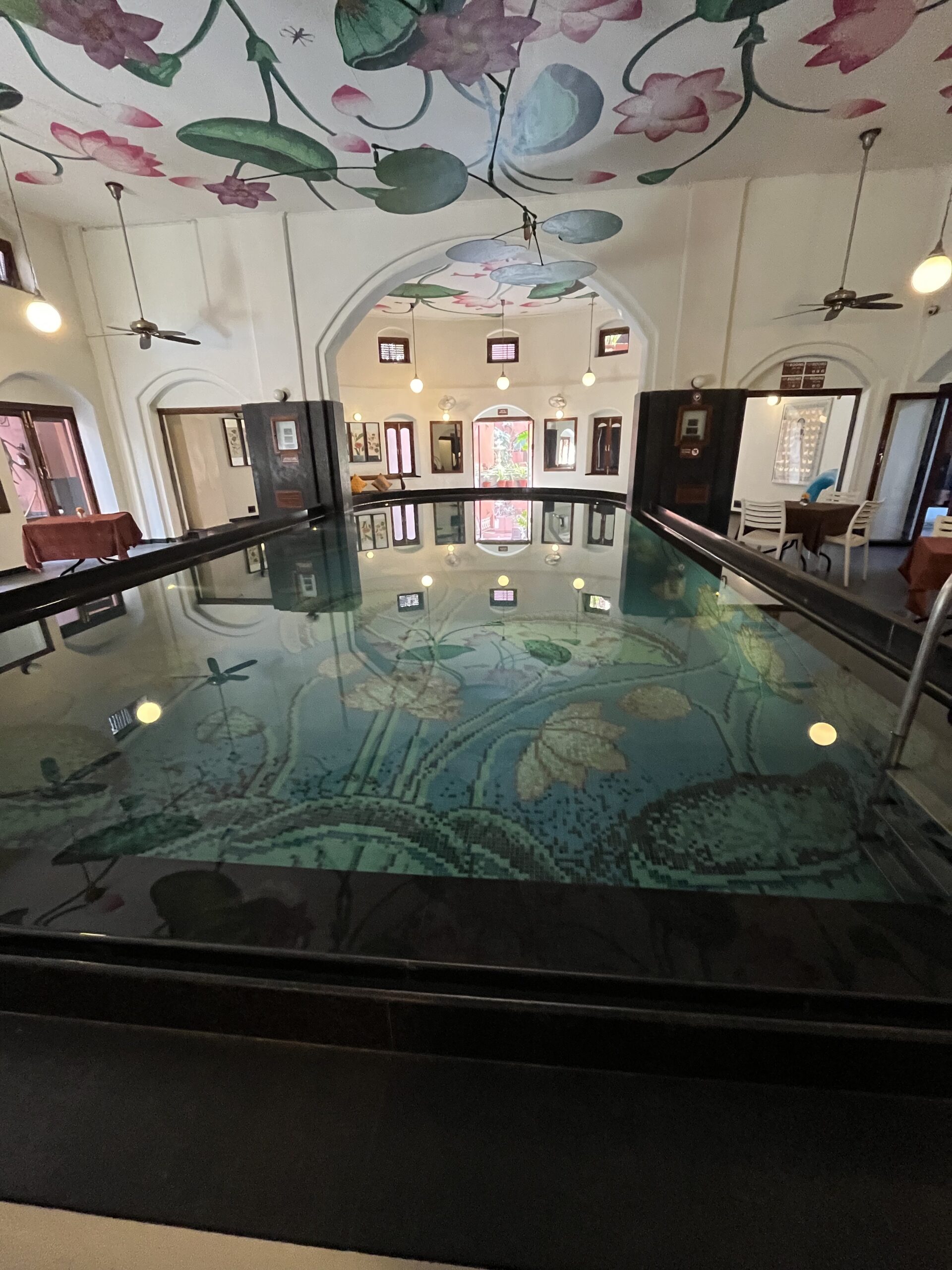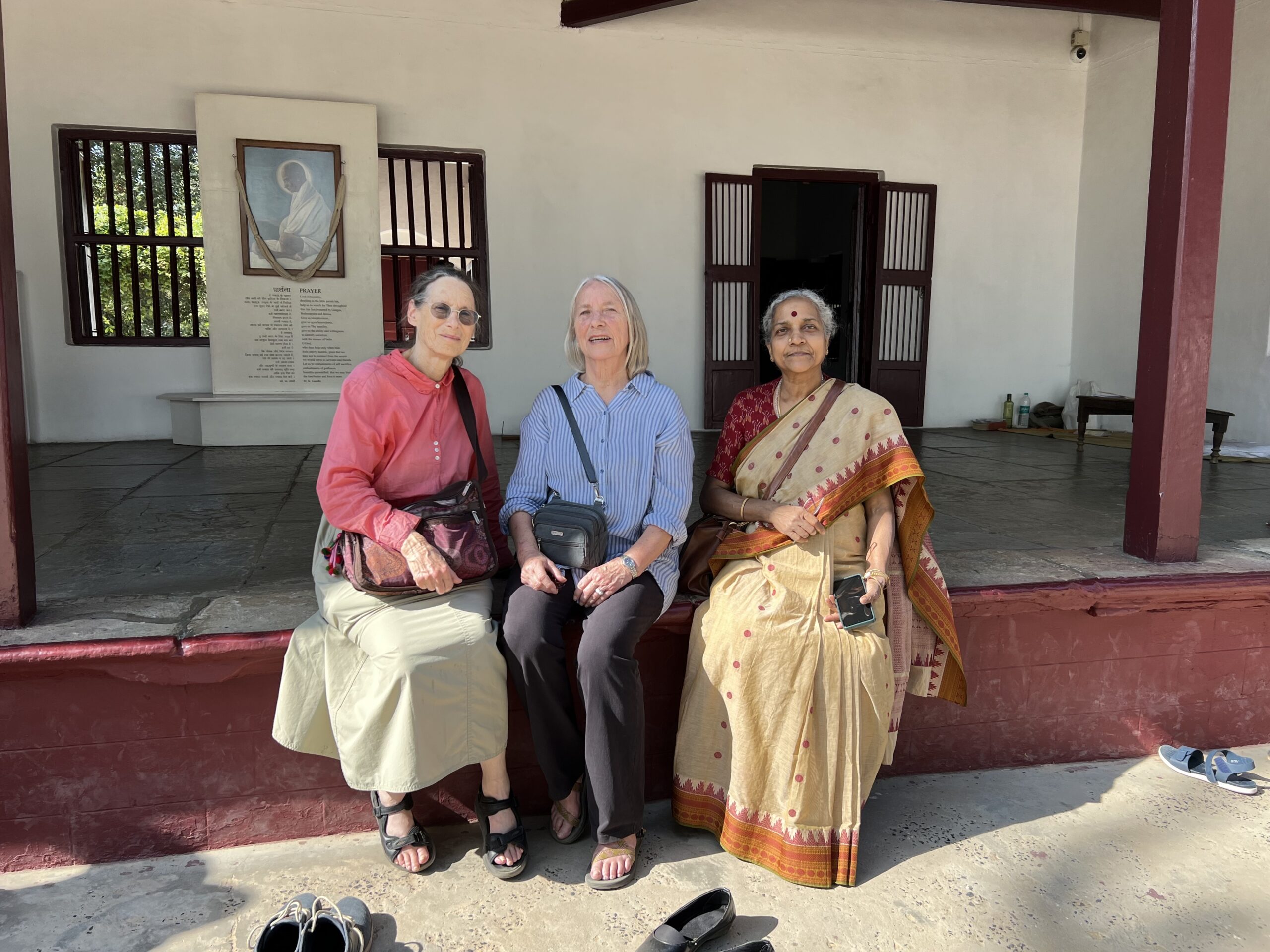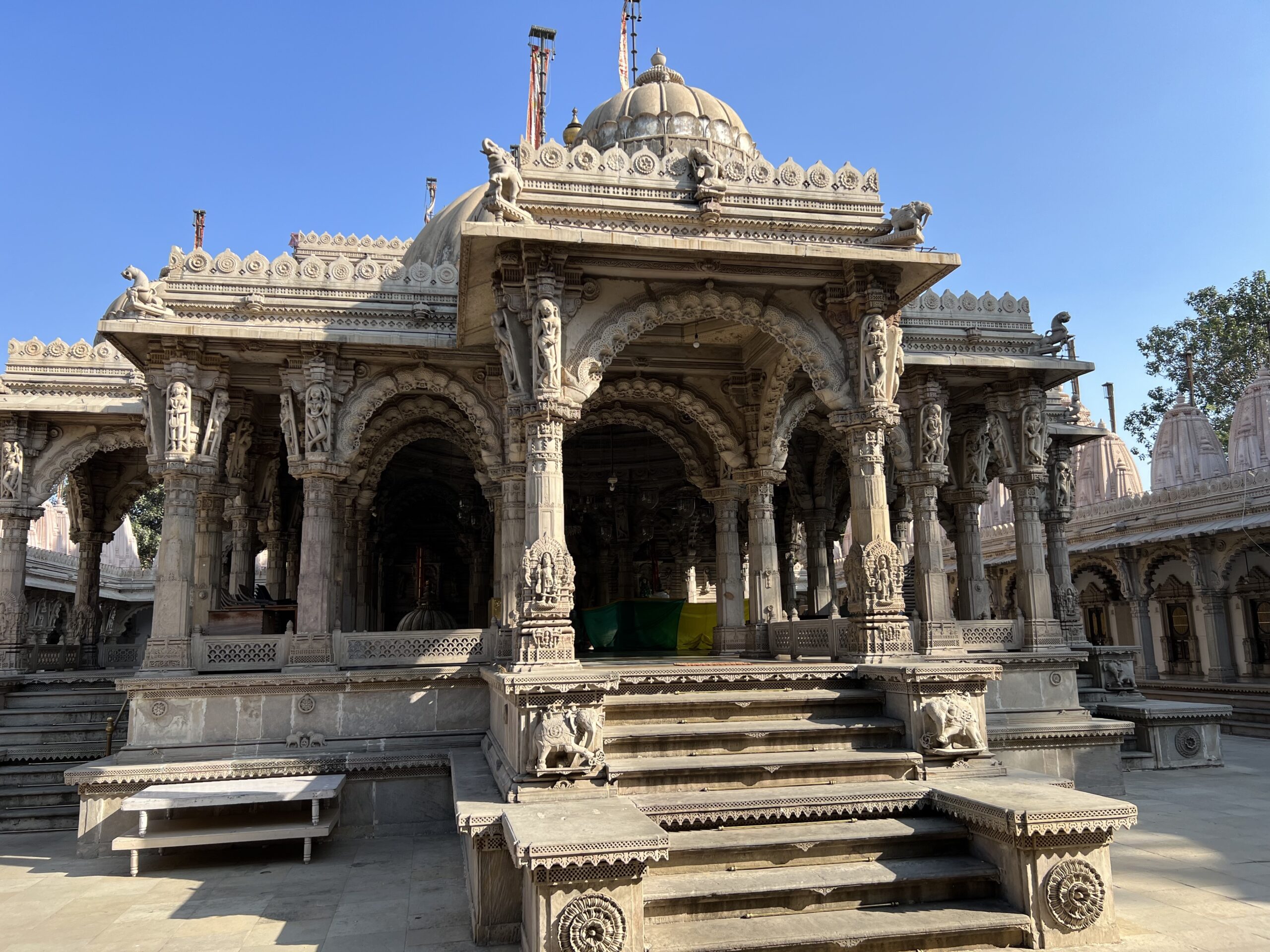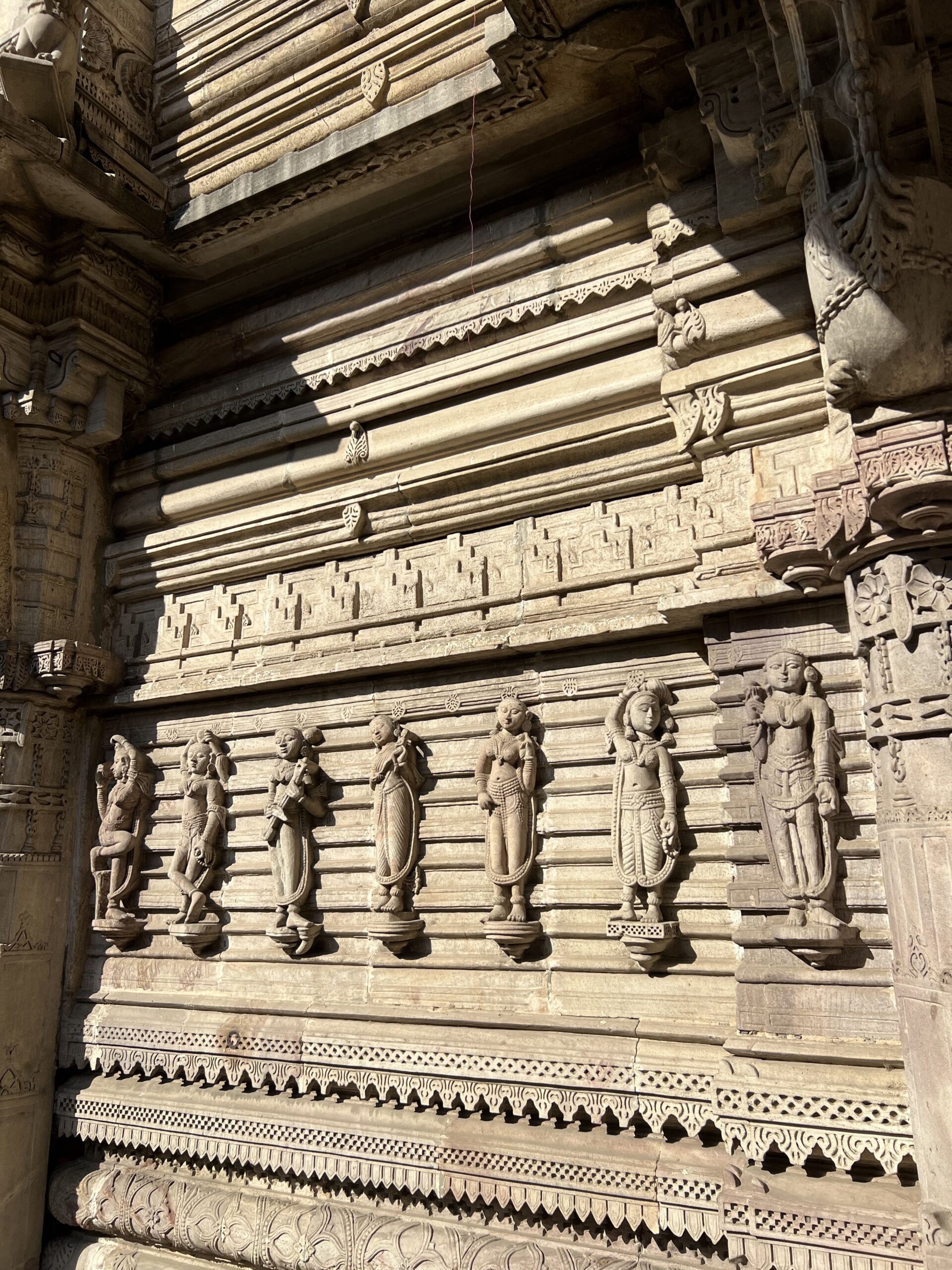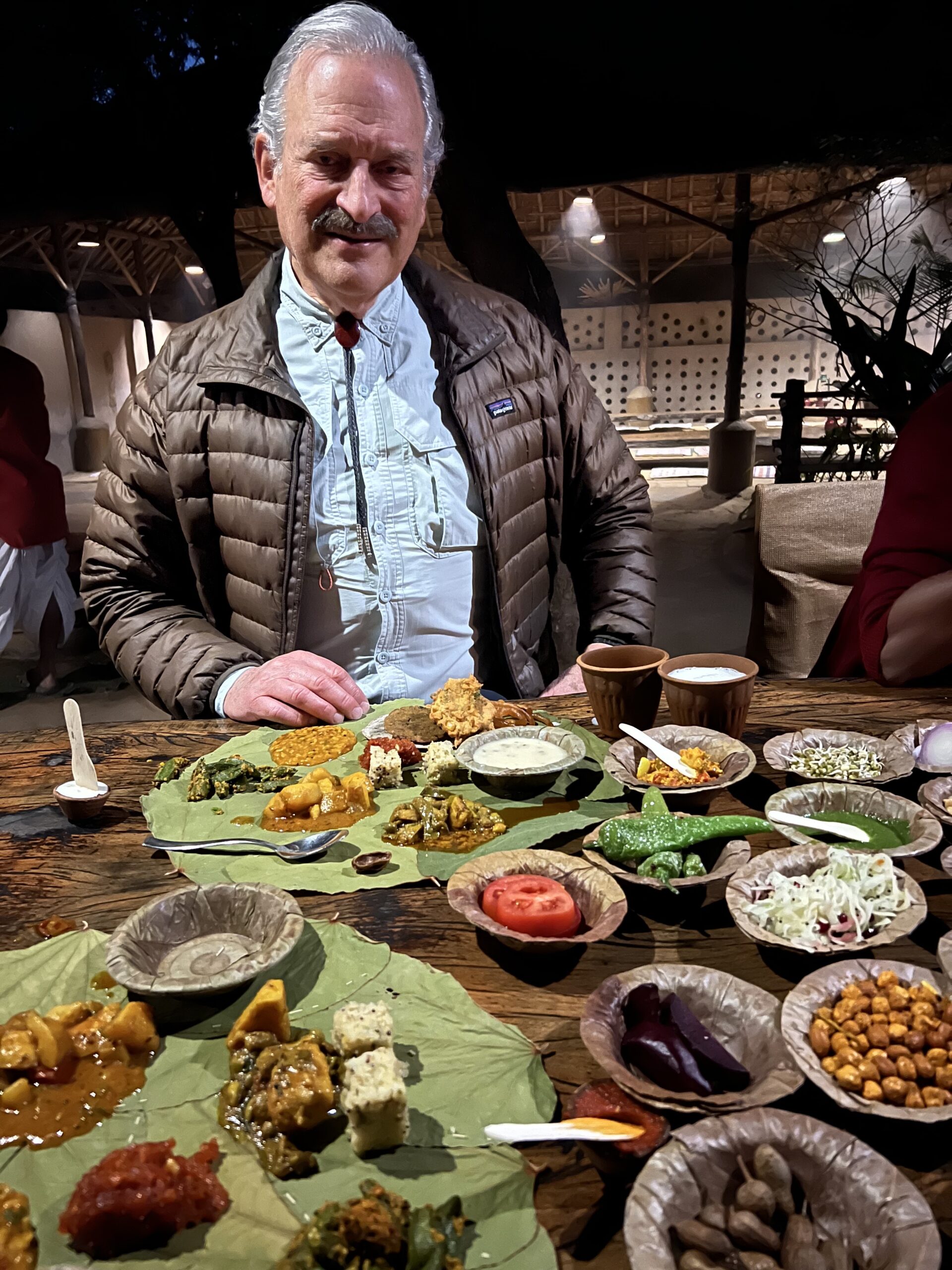Gujarat is the most Western state in India, bordering Pakistan, known for the displacement of its people during the partition of India in 1947, its fine local textiles, rural arts and crafts, and its archeological sites. It is also a place with very little foreign tourism.
We are now in Ahmedabad, the 7th largest city in India, staying in the magnificent House of MG, a 1904 family residence of wealthy textile factory owners, located in the very center of the old part of the city, now beautifully restored with antiques and art and retaining the sense of a traditional style of living.
We are only four travelers, my old friends Bill, who has been to India a number of times with me on my tours, Ginny who was first in India with me during my college years and then lived in Bombay and Delhi later in life and Gayathri, my Indian “sister” whose family I lived with in Hyderabad and who now runs the Academy of Bharata Natyam in Bangalore. So this is not a first time trip to India for any of us but it is our initial visit to a new culture, new language (Gujarati) and different way of life.
Ahmedabad, the capital of the State and its only large city, definitely has its own character. Its airport is quite nearby and its central roads are far less crowded than we expected, filled with yellow and green motor rickshaws (called tuk-tuks in other parts of Asia), few visible taxis, more motorcycles than cars, and even some old cycle rickshaws pulling commercial loads. It seems a throwback to an earlier time. It is also a very Hindu very vegetarian culture.
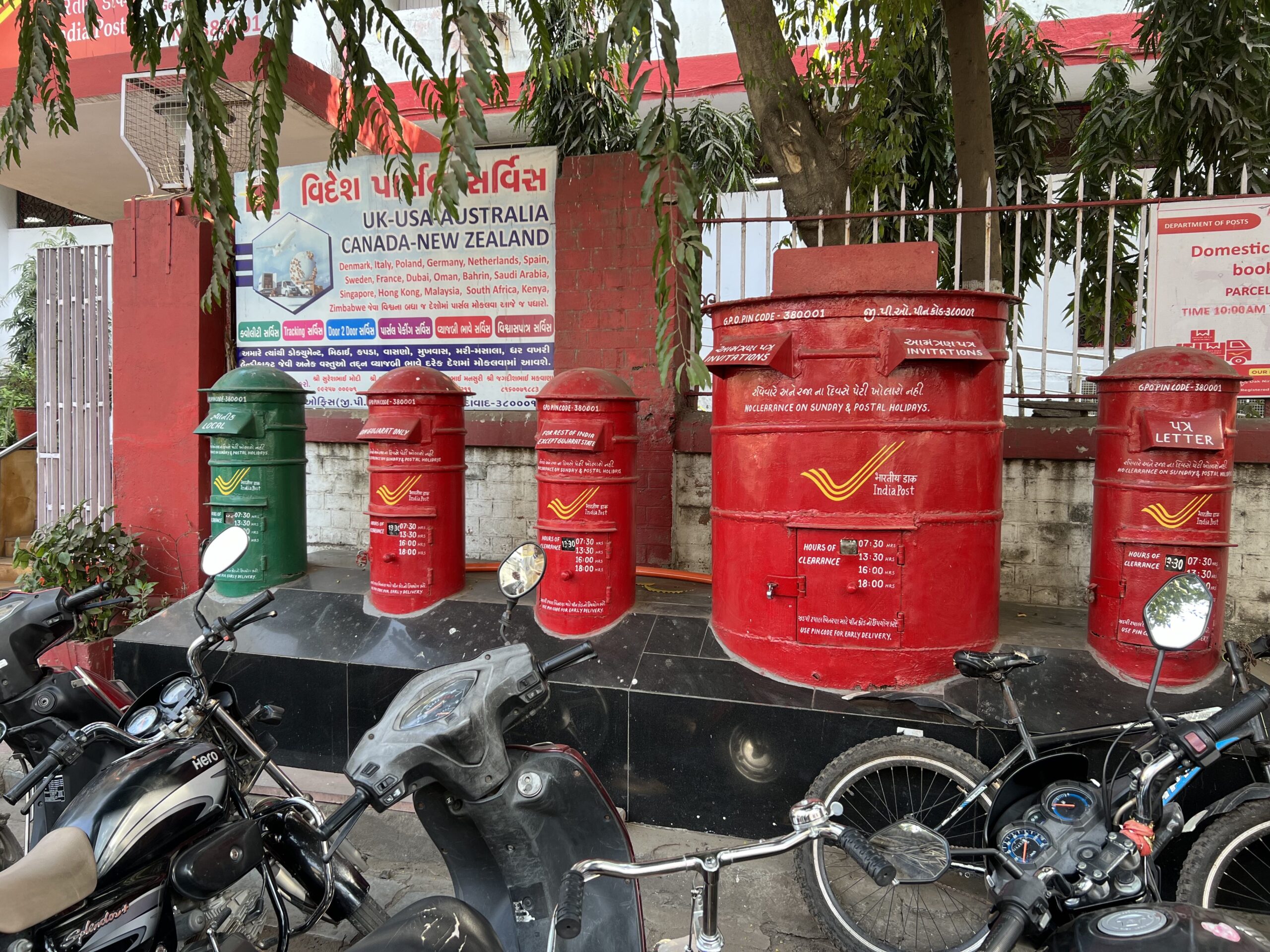
This became more apparent our first morning. After we all arrived from our separate very long journeys and had breakfast together, Bill and I set out to the local post office so he could mail some small packages within India and me with several postcards in hand. One of the front desk staff went with us and although we at first thought we could manage very well walking around the block to a post office by ourselves, his help turned out necessary. This old central post office was almost empty. I went to the stamp window to buy the necessary postage and the woman behind the iron grillwork looked carefully at my cards, turned them over and over, handed them to someone else who similarly looked puzzled. He walked around and showed them to a third man who seemed in charge who once again kept on turning the two cards over and finally made a phone call. Finally I was told, with the help of our guide, that I had to put the address of where I was staying and its phone number on the card before it could be mailed. Once that was done, I paid the charge of 50 rupees, equal to about 80 cents. And maybe the cards will eventually get to my two grandchildren. Bill, meanwhile, at another window with the hotel guide next to him, was also given return mail instructions and forms to fill out and after about 20 minutes was able to send off his packages to Kolkata, the other side of India.
As our official tour does not start until tomorrow, we set out for an afternoon visit to the Sabarmati/Satyagraha Ashram, founded by Mohandas Gandhi, the Mahatma, where he lived from 1917. This was his principled move from an urban communal living site in Ahmedabad to a rural location where self-sufficiency could be practiced. The museum and site was beautifully preserved and well done and gave us a sense of the times and the struggle. But we have since heard from our guide that many younger people in India today now believe that Gandhi is not a hero and made poor choices in the final conflict with Britain that unnecessarily led to the death of many Hindus. But it must be noted that this is said in a pro-prime minister Modi, who is a Gujarati and former governor of the State, conservative Hindu state.
Our driver then brought us to the Hutheesing Jain Temple, a large very ornate carved structure, built in 1848 using a more ancient architectural style. Upon entering the inner sanctum, he sat and prayed while we admired the white marble and encrusted gold sacred images and walked around to view the fine carvings adorning every inch of the multi-layered exterior.
Dinner was a splendid affair at a local restaurant called Vishalla, built to resemble a Gujarat village on several acres in the heart of Ahmedabad. Attached to it is a Utensil Museum showcasing hundreds of years of implements and tools made of metal work and used for everyday living. Gayathri, Ginny and I kept on commenting on the familiarity of many of the objects we saw as they reflected a way of life which we all remembered from 50 years ago – and which tools of life many young people in India today would not recognize – vegetable peelers, milk pots, devotional lights, betel nut cutters, dowry boxes, and many kinds of locks.
Exhausted we fall into bed and hope to recover from our jet lag.

